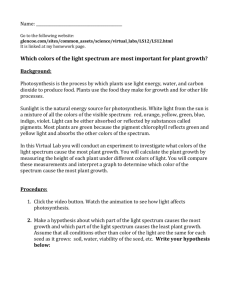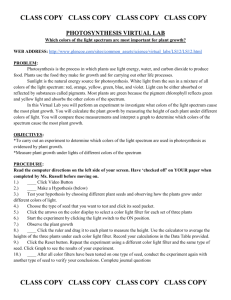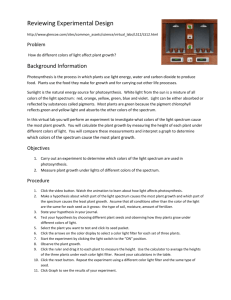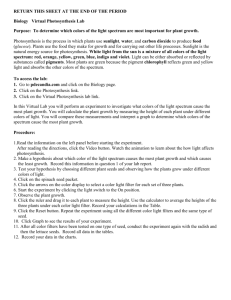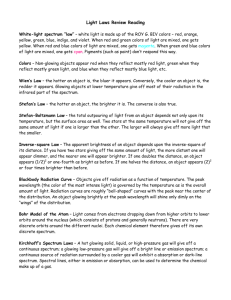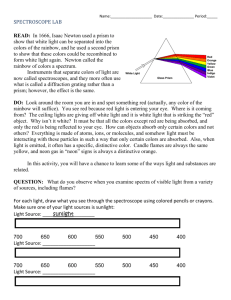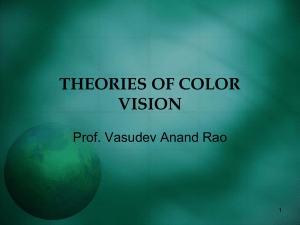Light and Plant Growth-Glenco Virtual Lab
advertisement
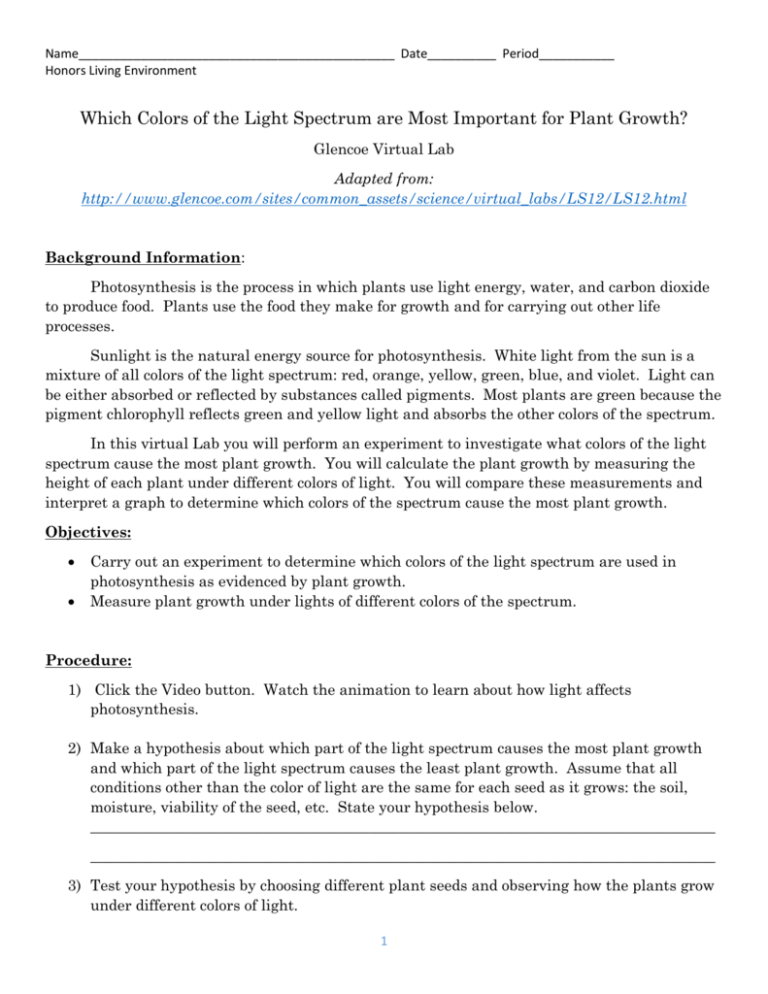
Name______________________________________________ Date__________ Period___________ Honors Living Environment Which Colors of the Light Spectrum are Most Important for Plant Growth? Glencoe Virtual Lab Adapted from: http://www.glencoe.com/sites/common_assets/science/virtual_labs/LS12/LS12.html Background Information: Photosynthesis is the process in which plants use light energy, water, and carbon dioxide to produce food. Plants use the food they make for growth and for carrying out other life processes. Sunlight is the natural energy source for photosynthesis. White light from the sun is a mixture of all colors of the light spectrum: red, orange, yellow, green, blue, and violet. Light can be either absorbed or reflected by substances called pigments. Most plants are green because the pigment chlorophyll reflects green and yellow light and absorbs the other colors of the spectrum. In this virtual Lab you will perform an experiment to investigate what colors of the light spectrum cause the most plant growth. You will calculate the plant growth by measuring the height of each plant under different colors of light. You will compare these measurements and interpret a graph to determine which colors of the spectrum cause the most plant growth. Objectives: Carry out an experiment to determine which colors of the light spectrum are used in photosynthesis as evidenced by plant growth. Measure plant growth under lights of different colors of the spectrum. Procedure: 1) Click the Video button. Watch the animation to learn about how light affects photosynthesis. 2) Make a hypothesis about which part of the light spectrum causes the most plant growth and which part of the light spectrum causes the least plant growth. Assume that all conditions other than the color of light are the same for each seed as it grows: the soil, moisture, viability of the seed, etc. State your hypothesis below. ___________________________________________________________________________________ ___________________________________________________________________________________ 3) Test your hypothesis by choosing different plant seeds and observing how the plants grow under different colors of light. 1 4) Choose the type of seed that you want to test and click its seed packet. 5) Click the arrows on the color display to select a color light filter for each set of three plants. 6) Start the experiment by clicking the light switch to the On position. 7) Observe plant growth. 8) Click the ruler and drag it to each plant to measure the height. Use the calculator to average the heights of the three plants under each color light filter. Record your calculations in the Table. 9) Click the Reset button. Repeat the experiment using a different color light filter and the same type of seed. Complete the graph provided to display your results from the experiment. 10) After all color filters have been tested on one type of seed, conduct the experiment again with another type to verify your conclusions. Complete the Journal questions. Results: Filter Color Spinach Average Height (cm) Radish Average Height (cm) Lettuce Average Height (cm) Red Orange Green Blue Violet Graph: Print out your graph from the Virtual Lab and staple to this lab. (Go to Table, Input Data, Click Graph, Print) 2 Analysis (Journal): 1. How did you test your hypothesis? Which variables did you control in your experiment and which variable did you change in order to compare your growth results? ____________________________________________________________________________________ ____________________________________________________________________________________ ____________________________________________________________________________________ ____________________________________________________________________________________ 2. Analyze the results of your experiment. Did your data support your hypothesis? Explain. If you conducted tests with more than one type of seed, explain any differences or similarities you found among types of seeds. ____________________________________________________________________________________ ____________________________________________________________________________________ ____________________________________________________________________________________ ____________________________________________________________________________________ 3. What conclusions can you draw about which color in the visible spectrum causes the most plant growth? ____________________________________________________________________________________ ____________________________________________________________________________________ ____________________________________________________________________________________ ____________________________________________________________________________________ 4. Given that white light contains all colors of the spectrum, what growth results would you expect under white light? ____________________________________________________________________________________ ____________________________________________________________________________________ ____________________________________________________________________________________ ____________________________________________________________________________________ 3
